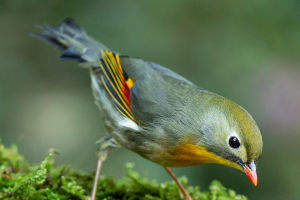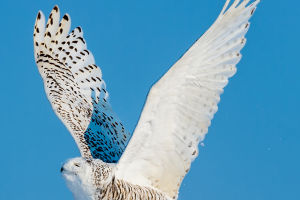In the animal kingdom, there is a bird that likes to eat bees, called bee-eaters. But more surprising than it likes the bee-eater's dietary characteristics is their courtship. Their love is based on a certain material basis.
Male bee-eaters give the captured insects to female bee-eaters as gifts, and female bee-eaters almost 100% accept food from males, which is the basis of their affection.
The chestnut-headed bee-eater is a magical creature whose existence divides humanity into two camps. People with bee phobia worship it because the bird loves to eat bees and wasps. Beekeepers hate them.
In addition to the resident southern African , the chestnut-headed bee-eater is highly migratory and winters in tropical Africa. This species usually breeds north of its range and occasionally northern Europe.
Like other birds, this species is a colorful bird. Sure, bright colors attract the attention of other predators, but bee-eaters themselves don't really care. Its strength is not its ability to blend with branches, but its excellent flying skills. Bee eaters glide through air currents no worse than swifts, they just don't feel safe on solid ground.
The sorrel bee-eater has long, pointed wings and tail, as well as a longer beak. They have a fairly long lifespan and can live for 10 years or more.
Also, their wings are long and pointed, so they can fly quickly. The sorrel bee-eater has a more graceful flight posture and can chase bees, wasps or other flying insects in the air at a high speed.
Eventually, they catch their prey with their slender, slightly downward-curved beaks. They also have a more common way of foraging, which is to stand on a perch to search for insects, and once they find a target, they will dive down.
The sorrel bee-eater is good at hunting insects in the air. As their name suggests, bees are one of their favorite foods. In addition, they also like to feed on dragonflies, locusts, wasps, ants and other insects.
If the sorrel bee-eater catches an insect with a stinger, they rub it hard against a branch until the stinger is wiped away. Occasionally, bee-eaters also smack their prey hard until the stingers on their bodies drop.
Sorrel bee-eaters like to build their nests on steep embankments, and their sharp beaks are their best tool for burrowing. Sorrel bee-eaters hatch after laying their first eggs. Therefore, when food is scarce, only the first hatchlings are likely to survive.
Adult sorrel bee-eaters bring back the spiky insects to feed their chicks. When the young are able to fly out of the nest to prey, the temporarily sterile sorrel bee-eaters usually help their companions to feed their chicks, and they are very united.


